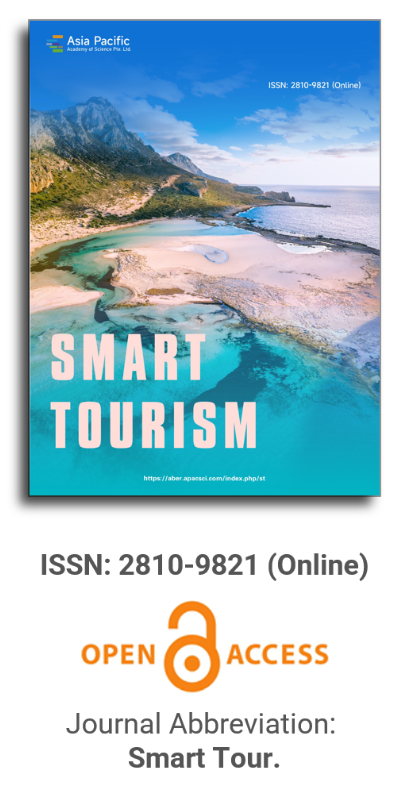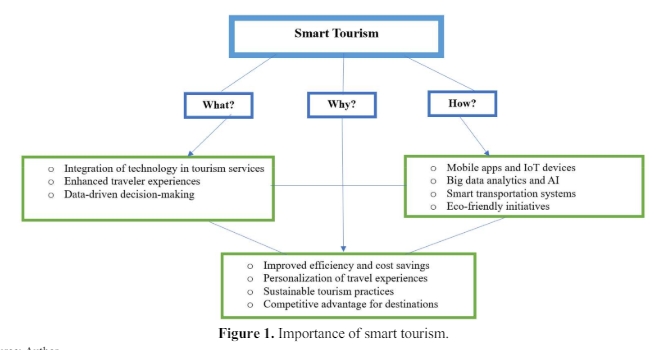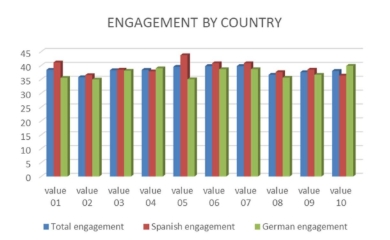


Adoption and implementation of an inclusive business integration model in the packaging of the tourist villages in the west of Bali Indonesia
Vol 4, Issue 2, 2023
Download PDF
Abstract
This research aims to analyze the application of the inclusive business integration model developed in Cepaka Village for the development of tourism village packaging. The model is intended to guarantee that the growth of tourism villages is both economically advantageous and socially and environmentally sustainable. This study examines the implementation of the model in tourism villages located in the western region of Bali. It assesses the effects of this implementation on the empowerment of the local community, the preservation of cultural heritage, and the economic development of the villages. This study is significant due to Bali’s recognition as a global tourism hotspot, where tourism villages possess immense possibilities but frequently encounter obstacles such as scarce resources, insufficient infrastructure, and the necessity for efficient marketing tactics. This study employs qualitative methods to analyze the effects of incorporating inclusive business practices on the development of tourism villages. Specifically, it investigates the influence on income generation, the equitable distribution of economic advantages among the community, and the preservation of cultural and environmental aspects. A total of 27 key informants, consisting of the chairman, vice chairman, and a member of the village management, were selected from 7 tourism villages in West Bali. The Jembrana Regency Tourism Office organized focus group discussions following a series of comprehensive interviews conducted in stages. Additionally, a crucial source of information was a proficient digital marketing specialist who aided in the process of digitalizing the marketing strategies for tourist villages in West Bali. The study’s findings indicate that the proposed model successfully integrates village economic activities with cultural and environmental aspects, resulting in a distinctive and genuine tourism experience in seven tourist villages in West Bali. The findings of this study are anticipated to offer valuable perspectives for policymakers, tourism professionals, and rural communities on how to maximize the opportunities of tourism villages in a comprehensive and environmentally friendly way. The research emphasizes the significance of adopting digital technology in marketing and distributing village tourism products. It also identifies the opportunities and challenges of implementing inclusive business models in Bali’s tourism village setting.
Keywords
References
- Jembrana. Jembrana west paradise of Bali. Available online: https://pariwisata.jembranakab.go.id/ (accessed on 23 November 2023).
- Uno SS. Sandiaga involves tourism villages to build medical tourism in Bali (Indonesian). Available online: https://www.liputan6.com/regional/read/4520620/sandiaga-libatkan-desa-wisata-bangun-medical-tourism-di-bali (accessed on 23 November 2023).
- IFC. IFC’s work in inclusive business. Available online: https://www.ifc.org/en/what-we-do/sector-expertise/inclusive-business (accessed on 23 November 2023).
- Elanda Y, Alie A. Strategy of fishing communities in meeting their subsistence needs in the white sand tourist village of Dalegan Gresik (Indonesian). Journal of Urban Sociology 2021; 3(2): 41. doi: 10.30742/jus.v3i2.1234
- Mardinata E, Cahyono TD, Muhammad Rizqi R. Village digital transformation through village information systems (SID): Improving the quality of public services and community welfare (Indonesian). Parta: Jurnal Pengabdian Kepada Masyarakat 2023; 4(1): 73–81. doi: 10.38043/parta.v4i1.4402
- Raharjana DT, Putra HSA. Strengthening human resources in e-marketing for promotion of tourism villages in Malang Regency (Indonesian). Jurnal Nasional Pariwisata 2020; 12(2): 140. doi: 10.22146/jnp.60403
- Purnamawati IGA, Adnyani NKS. Traditional villages and tourism integration model for inclusive social economy. Yurisprudentia: Jurnal Hukum Ekonomi 2021; 7(1): 77–92. doi: 10.24952/yurisprudentia.v7i1.3801
- Scheyvens R, Biddulph R. Inclusive tourism development. Tourism Geographies 2017; 20(4): 589–609. doi: 10.1080/14616688.2017.1381985
- Suprastayasa IGNA, Adyatma P, Tirtawati NM. Tourism village building villages with tourism (Indonesian). Available online: https://p3m.ppb.ac.id/wp-content/uploads/2023/03/BUKU-Membangun-Desa-Dengan-pariwisata.pdf (accessed on 23 November 2023).
- Gradl C, Knobloch C. Inclusive business guide. How to develop business and fight poverty. Available online: https://endeva.org/wp-content/uploads/2014/11/ibg_final-1.pdf (accessed on 23 November 2023).
- Pratiwi F. BI Bali focuses on developing export-oriented MSMEs in Jembrana (Indonesian). Republik, 28 January 2022.
- Wimanda RE. Bank Indonesia Representative Office Bali Province (Indonesian). Available online: https://www.bi.go.id/id/tentang-bi/profil/organisasi/Pages/Kantor-Perwakilan-Provinsi-Bali.aspx (accessed on 23 November 2023).
- Gupta D, Ghersi F, Vishwanathan SS, et al. Achieving sustainable development in India along low carbon pathways: Macroeconomic assessment. World Development 2019; 123: 104623. doi: 10.1016/j.worlddev.2019.104623
- Garg S. Introduction and background. HR Initiatives in Building Inclusive and Accessible Workplaces. Emerald Publishing Limited; 2019. pp. 1–16. doi: 10.1108/978-1-83867-611-720191001
- Luhur P. KemenKopUKM guards the creation of inclusive business in the region at the UN ESCAP Meeting. Available online: https://koperasi.kulonprogokab.go.id/detil/1278/kemenkopukm-kawal-terciptanya-inclusive-business-di-kawasan-dalam-pertemuan-un-escap (accessed on 23 November 2023).
- Likoko E, Kini J. Inclusive business—A business approach to development. Current Opinion in Environmental Sustainability 2017; 24: 84–88. doi: 10.1016/j.cosust.2017.03.001
- Asian Development Bank (ADB). How Inclusive is Inclusive Business for Women? Examples from Asia and Latin America. Asian Development Bank; 2016.
- Sutapa IK, Karta NLPA, Dwiyanti NMC, et al. Community involvement in packaging innovation ensuring the sustainability of destination. International Journal of Social Science and Business 2022; 6(2): 199–206. doi: 10.23887/ijssb.v6i2.44268
- Karta NLPA, Ary Widiastini NM, Sutapa IK, et al. The role of branding strategy in strengthening the image of the village tourism in Bali. Journal of Bali Studies 2021 11(2): 369. doi: 10.24843/jkb.2021.v11.i02.p07
- Karta NLPA, Antari NLS, Nugraha S. Synergy MSMEs in packaging the Cepaka Kediri Tabanan tourism village (Indonesian). Available online: https://eprints.triatmamulya.ac.id/522/1/SENADIMAS6_Synergy%20UMKM%20dalam%20Packaging%20Desa%20WIsata%20Cepaka.pdf (accessed on 23 November 2023).
- Pratiwi KSAL, Karta NLPA, Ramanita NWS, et al. Application of digital marketing as a global marketing media to increase sales of gringsing woven cloth in Tenganan Pegringsingan Village, Bali (Indonesian). Jurnal Bisnis dan Pemasaran Digital 2023; 2(2): 105–113. doi: 10.35912/JBPD.v2i2.2566
- Taecharungroj V, Prasertsakul D. Placeful business: Reimagining a small business concept that embraces and enriches places. Sustainability 2023; 15(12): 9370. doi: 10.3390/su15129370
Supporting Agencies
Copyright (c) 2023 Ni Luh Putu Agustini Karta, I Ketut Putra Suarthana, Ni Made Ary Widiastini, Ni Ketut Dewi Irwanti
License URL: https://creativecommons.org/licenses/by/4.0

This site is licensed under a Creative Commons Attribution 4.0 International License (CC BY 4.0).

Prof. Hung-Che Wu
Nanfang College, Guangzhou
China
Indexing & Archiving
Asia Pacific Academy of Science Pte. Ltd. (APACSCI) specializes in international journal publishing. APACSCI adopts the open access publishing model and provides an important communication bridge for academic groups whose interest fields include engineering, technology, medicine, computer, mathematics, agriculture and forestry, and environment.



.jpg)
.jpg)

.jpg)

